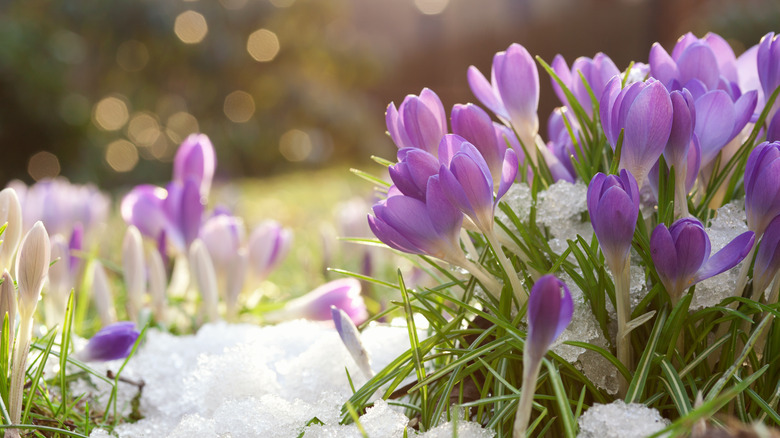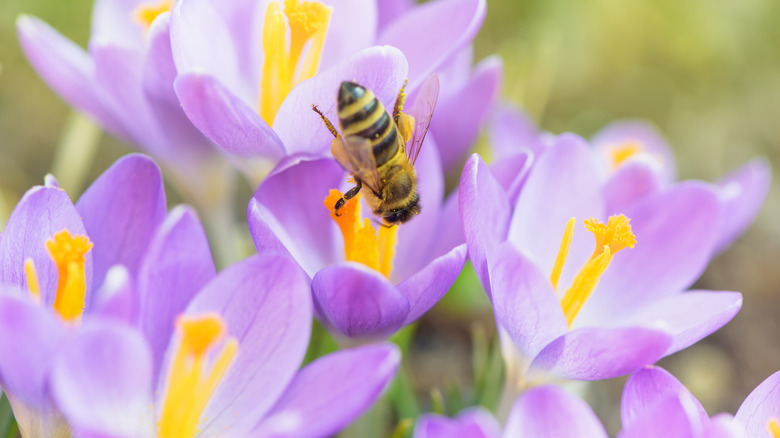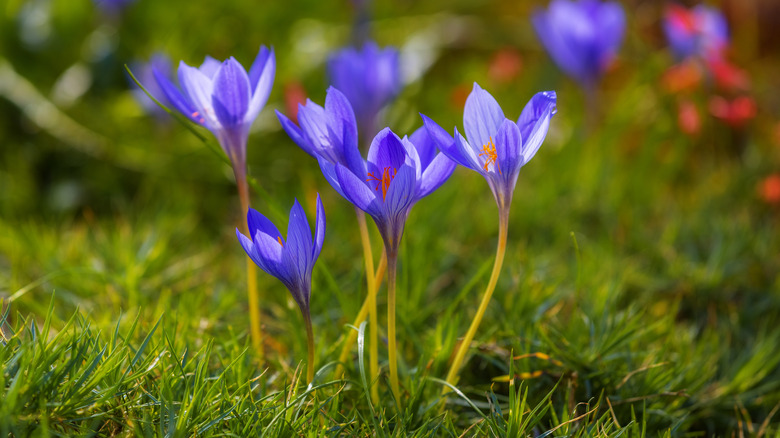Why Do Crocuses Bloom So Early In Spring?
Crocuses (crocus vernus) are known for their purple and white flowers that frequently appear while there is still snow on the ground. Normally blooming in the winter and early spring months, the flowers stay open for approximately three weeks with the right sort of care. Keep in mind, their delicate floral display reaches less than 6 inches high. Plan to grow yours near walkways or at the front of your border garden, so they can easily be enjoyed by you and passers-by.
Just as we awake in the morning and fall asleep at night, the crocus flower opens and closes with the same schedule. While crocuses are in bloom, their blossoms show off wonderful petals while the sun is shining and begin to close as sunset draws near. The nyctinastic flower usually tucks itself in during rainy or cloudy days too. Therefore, if these flowers prefer sunny days, why do they bloom so early in the spring when there is little daylight and frequent rain?
Early flowers help the bees
Spring crocuses are likely one of the most well-known winter-blooming plants. Their low-maintenance needs make them easy to grow in a garden still covered in snow that is begging for more color. Crocuses' iris-like flowers bring vibrant shades of lavender to almost any dreary landscape. However, this plant doesn't bloom so early just to liven up your garden — it does so to help the bees.
Crocuses are a saving grace for winter-weary pollinators, who need the pollen from the flowers to keep living. As an important source of food for bees, be wary of heavy snow and very cold temperatures which can damage the open blossoms. In the colder months of spring, you can keep row covers, plastic jugs, or similar coverings over the flowers during adverse weather conditions. Luckily, any damage to the flowers done by the weather will not affect the corms (bulbs) that they grow from. If your crocuses don't make it this spring, they should bloom again next year.
How to care for early-blooming spring crocuses
Crocus corms can be planted in the fall before the soil has frozen. Lots of gardeners choose to plant theirs in abundance for a spectacular display of color at the end of winter. The crocus flowers appear very quickly. They have no stems, so the whole plant will emerge at the same time – foliage, flower, and all. From the same bulb, several flowers are likely to blossom one after the other and will then go dormant at the end of spring after flowering.
Crocuses grow best in full sun or partial shade in well-draining soil. They thrive under the protection of taller deciduous trees, however, root competition can force them to die if they don't have enough access to water. When planted in the ideal location, these crocus corms will multiply and produce even more blossoms in the following years. In some instances, vigorous growth of the plants may need to be controlled by dividing the corms every few years.


